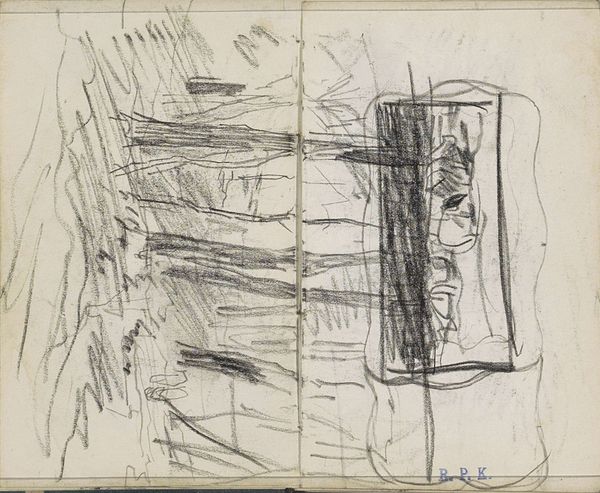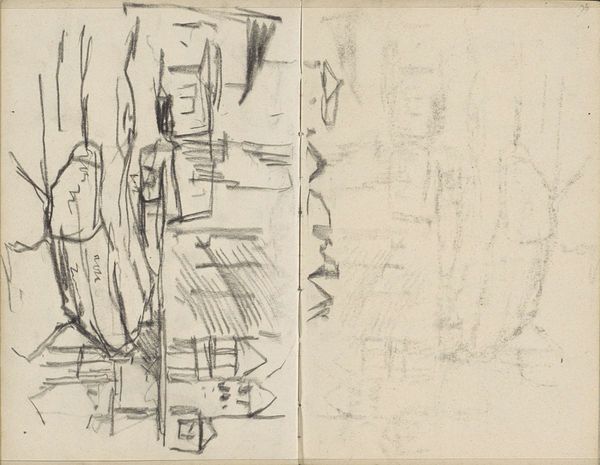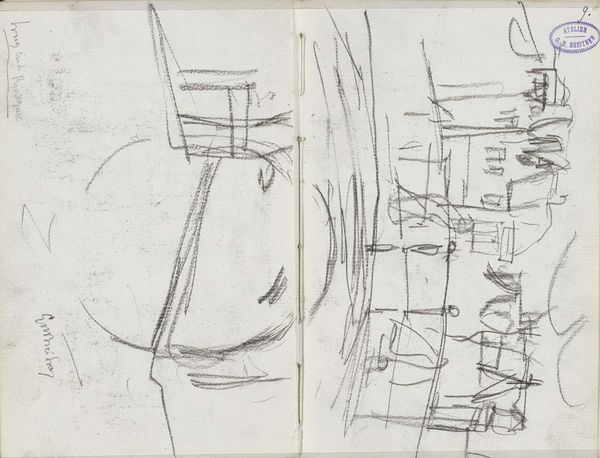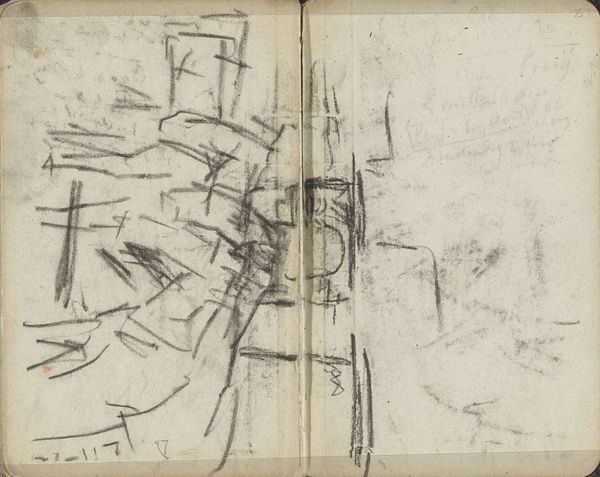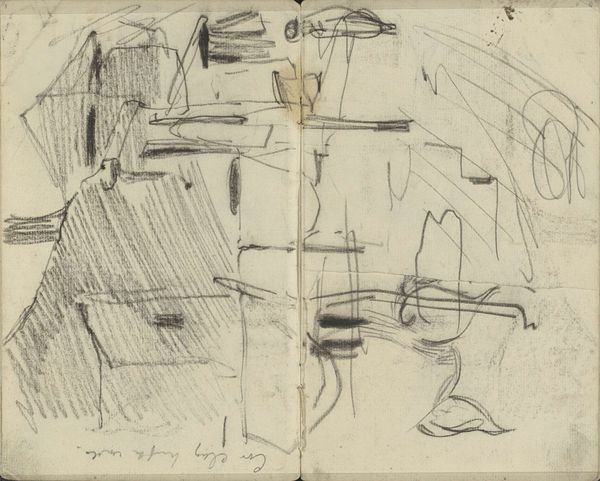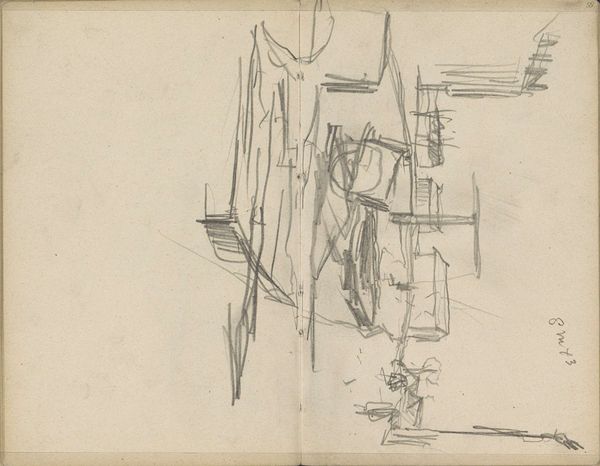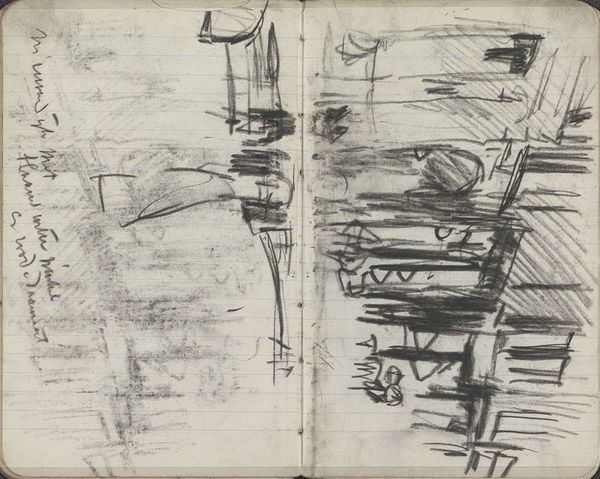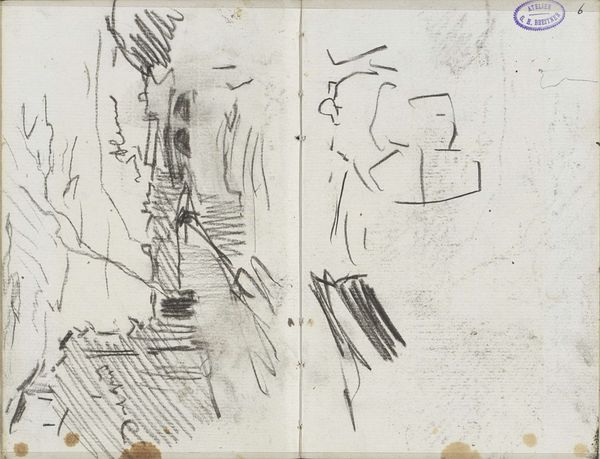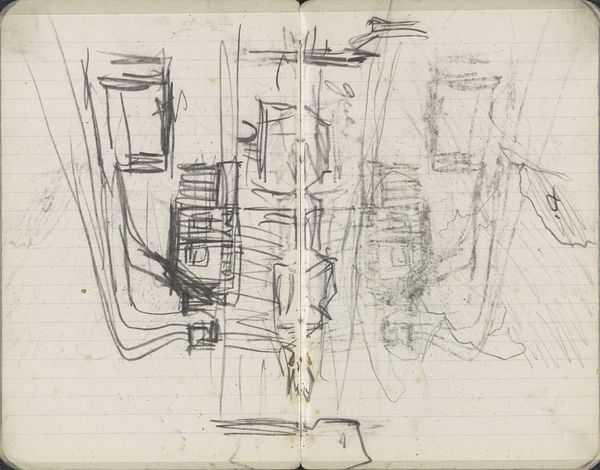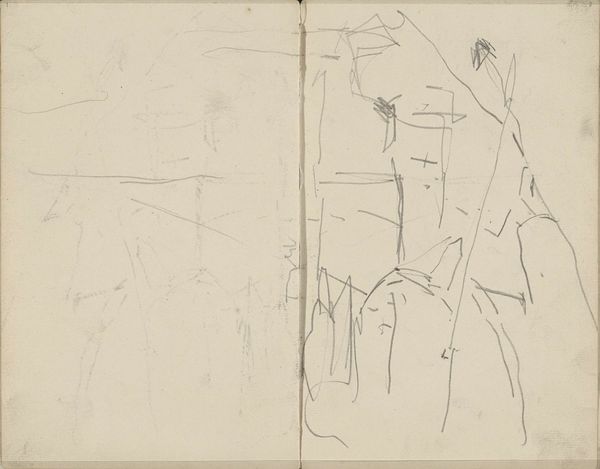
drawing, pencil
#
drawing
#
quirky sketch
#
impressionism
#
pen sketch
#
landscape
#
personal sketchbook
#
idea generation sketch
#
sketchwork
#
ink drawing experimentation
#
pen-ink sketch
#
pencil
#
sketchbook drawing
#
storyboard and sketchbook work
#
sketchbook art
Copyright: Rijks Museum: Open Domain
Curator: George Hendrik Breitner's 1887 sketch, "Gezicht op een brug in Amsterdam," offers a glimpse into his process. The work, rendered in pencil, captures a scene now held at the Rijksmuseum. Editor: My first impression is that this feels raw and immediate – a fleeting moment captured in charcoal, full of movement and light. There is an appealing grittiness about it. Curator: Absolutely, the quick strokes highlight his method. You can see Breitner working rapidly to fix the scene on the page. These sketches are crucial to understand his whole art-making endeavor; not necessarily valuable works of art in and of themselves, but indispensable components for generating future paintings, connecting mental concepts with actual craft. Editor: I think that the urban experience, especially within the context of a quickly modernizing Amsterdam, needs to be examined through the lens of industrial production and human labor. The figures that you can make out feel secondary to the composition, almost ghost-like or anonymous. Breitner had his artistic formation between The Hague School, very linked to country life, and Impressionism; I see in that dialogue an analogy to what happens when you consider urban expansion, like the one Amsterdam experimented at the time. Curator: You raise a valid point about production. The sketch is utilitarian. Note how it documents a specific angle of the bridge's material components – the span, support structures – revealing that art, like engineering, shares a dependency on industry-provided materials. The support dictates the form; it speaks of labor of builders just as the pencil strokes show labor of the artist. Editor: And think about how this bridge facilitated not just literal connections but also symbolizes societal transformations. Amsterdam was growing and transforming due to capitalism. Curator: The bridge indeed functions as both a literal passage and an indication of transition within a growing economy of people and goods. The sketch offers an unfiltered view of artistic interpretation, revealing not only subject and perspective but also a critical juncture between industry, labor and creativity. Editor: To step away, let's keep in mind those less visible, less represented when looking at even this casual sketch: those excluded by gender, class, and race, who may well have built the foundations that are now supporting these privileged views. Curator: Exactly. It highlights art-making as yet another social labor deeply interwoven into the urban fabric, as material and conceptual infrastructure. Editor: Precisely, and it prompts a dialogue not just on artistic merit, but also the hidden narratives embedded within the frame.
Comments
No comments
Be the first to comment and join the conversation on the ultimate creative platform.

